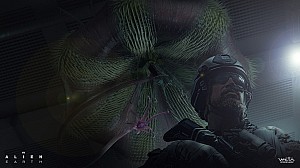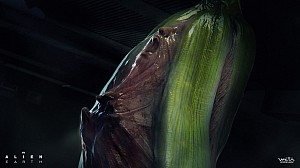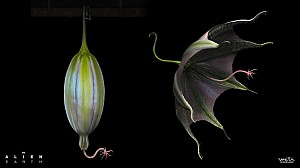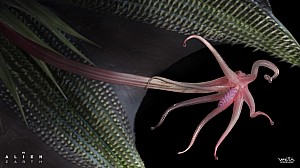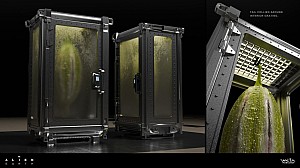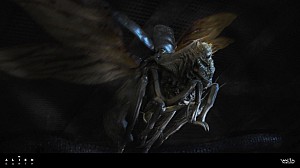This post was published by a guest. The views expressed are those of the author and do not necessarily reflect the views of alien-covenant.com.
The 1979 film Alien, directed by Ridley Scott, is one of the most influential films in both the horror and science fiction genres. It’s a masterpiece that uniquely combines the terrifying elements of horror with the futuristic concepts of science fiction, crafting a story that continues to captivate audiences to this day. In Alien, the audience is thrust into an isolated, futuristic world where the unknown presents a terrifying and relentless threat. This seamless blend of genres laid the foundation for a franchise that has spanned decades, influencing everything from films and TV shows to video games and literature.
"Explore a 20 free no deposit casino offer" – similar to how Alien keeps its audience on the edge of their seats with its intense, suspenseful plot, the thrill of exploring something unknown and possibly dangerous is what draws people in, whether it's the vastness of space or a casino game. The comparison highlights that both horror and excitement stem from venturing into unknown, high-stakes territories. But how does Alien balance the science fiction and horror elements so effectively? Let’s break down how Ridley Scott merges these genres and why it has left such a lasting impact on cinema.
The Horror Element in Alien
At its core, Alien is a horror movie. It uses many traditional horror tropes, such as isolation, fear of the unknown, and a terrifying monster, but it also subverts some conventions in a way that elevates the genre. The film takes place aboard the Nostromo, a mining ship in deep space, where a small crew becomes prey to an alien creature after investigating a distress signal. The crew is isolated in space with no immediate help, making them vulnerable to the alien’s deadly attacks.
One of the most compelling elements of the horror in Alien is the sense of claustrophobia. The film creates an environment where there is no escape. The vastness of space outside contrasts with the tight, confined spaces within the ship. The ship's interior, with its dark corridors and malfunctioning systems, mirrors the characters' sense of dread and helplessness. As the crew is picked off one by one, the audience feels the mounting tension, unable to escape the doom that follows them, just as the characters themselves can’t escape the ship or their fate.
The alien creature, which evolves from a parasitic organism to a fully-grown xenomorph, embodies the essence of horror. It’s not only monstrous in appearance but also terrifying because of its relentless pursuit and near invincibility. The xenomorph's physiology and behavior invoke fear on a primal level—its acidic blood, its ability to hide in the shadows, and the unpredictability of its attacks make it an apex predator. The xenomorph isn’t just a monster; it represents the horror of an unknowable, unstoppable force.
Moreover, the psychological horror in Alien is deeply rooted in the fear of the unknown. The crew doesn’t understand what they are facing, and that lack of knowledge makes the alien all the more terrifying. The first time the creature appears in full form is a shocking moment, and it’s so effective because the film takes its time building suspense. The creature’s slow reveal and its terrifying, stealthy approach create an atmosphere where the audience is constantly on edge, unsure of when the next attack will come. This slow buildup and the unpredictable nature of the creature’s movements are key ingredients of the horror that Alien excels at.
The Science Fiction Elements in Alien
While Alien is often classified as a horror film, it is also a quintessential science fiction movie. The film is set in the distant future, aboard a spaceship traveling through deep space, and introduces many elements that explore humanity’s relationship with technology, the unknown, and alien lifeforms. The futuristic setting is immediately evident in the film's design, from the ship's aesthetic to the technology used by the crew.
One of the most striking science fiction elements in Alien is the depiction of space travel. The Nostromo is a commercial towing vehicle, designed to transport goods across vast distances in space, which reflects the realism of the world-building. Unlike many science fiction films that depict sleek, futuristic spaceships, Scott intentionally gave the Nostromo a more industrial, utilitarian design, which added a sense of realism to the film. This attention to detail made the setting feel more grounded and believable, and the contrast between the cold, mechanical nature of the ship and the organic horror of the alien makes the situation even more disturbing.
Additionally, the film explores the concept of artificial intelligence through the character of Ash, the ship's science officer, who is revealed to be an android. His secret mission, ordered by the company, involves bringing the alien back for study, regardless of the crew's safety. The tension between human and machine is central to Alien’s science fiction themes. Ash's behavior—his detachment from human life, his cold, calculated actions—represents a cautionary tale about the dehumanizing potential of advanced technology. This aspect of the film raises questions about corporate greed, the ethics of artificial intelligence, and humanity’s quest to control the unknown, all of which are deeply rooted in science fiction.
Furthermore, Alien touches on themes of biological and genetic manipulation. The alien itself, a product of parasitic lifeforms, introduces the idea of an extraterrestrial organism whose life cycle is vastly different from anything humanity has encountered. This alien biology—its parasitic nature, its growth from a chestburster to a full-grown xenomorph—raises questions about the nature of life and the potential for hostile lifeforms in the universe. It also serves as a metaphor for the fears of biological contamination, genetic experimentation, and the unknown horrors that could exist beyond Earth.
Blending Horror and Science Fiction
What makes Alien such a remarkable film is how it blends the elements of horror and science fiction seamlessly. The horror is grounded in the crew's fight for survival against an otherworldly monster, while the science fiction aspects are deeply embedded in the setting, technology, and existential questions raised by the alien. The isolation of the ship and the terrifying unknown both contribute to a sense of hopelessness that is common in horror films, but they also play into the broader science fiction theme of humanity’s vulnerability in the vast, unknown cosmos.
The combination of these genres serves to amplify the impact of both. The horror is intensified by the science fiction elements because the audience is confronted not only with a terrifying alien creature but also with the implications of space exploration—encounters with unknown lifeforms, technological risks, and the ethical questions that arise when humanity ventures too far into the unknown. Alien uses science fiction to ask deeper questions about humanity’s place in the universe, its relationship with technology, and its survival in the face of the unimaginable.
Conclusion
Alien is a genre-defying film that remains one of the most influential in cinematic history. Its ability to blend horror with science fiction created a film that is both terrifying and thought-provoking, offering something for fans of both genres. The claustrophobic horror and the terrifying unknowns of the alien creature play perfectly with the film’s futuristic setting, technological concerns, and existential themes, creating an experience that has captivated audiences for decades. Alien is a true testament to how the intersection of horror and science fiction can result in a story that is both haunting and intellectually stimulating, leaving a legacy that continues to inspire filmmakers and audiences alike.
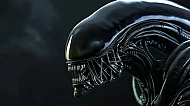
Why Scene-Timing Apps Are Becoming Essential for Movie Fans
Movie culture has changed dramatically over the years. Audiences today expect convenience, flexibility, and control over how they watch films—wh...
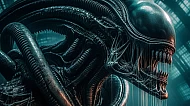
Exploring the Latest Trends in Slot Gaming
Despite notable advancements already, slot gaming continues to evolve at an impressive pace. These games blend technology and entertainment, throw in ...

5 Alien Movies Every Sci-Fi Fan Student Must See - The Ultimate Watchlist for 2025-26
Read this article and explore the top 5 alien movies every sci-fi fan student must see in 2025–26. Explore thrilling stories, deep space adventures, and unforgettable cinematic moments in this ultimate watchlist.


